|
|---|
|
|---|
Porsche 917 Concept design
The winner, the 917 Concept was designed to continue Porsche’s tradition, because, as we see, it inherited Le Mans 24 Hours winner’s car name. Its looks are great even though the conventional spoiler have been replaced by two wings, making the car more aggressive.
Everything was designed to reduce the weight of the car: even the dashboard, the steering wheel and the pedals were made of carbon fiber, not to speak about the bodywork. The rims are made of a mixture of carbon and magnesium. A camera positioned under the roof, has replaced the conventional rear mirrors.
Engine of Ferrari F430 Spider

 The F430 Spider is powered by the new 90 degree V8 featuring Ferrari's traditionally uncompromising design approach with a flat-plane crank (180 degrees between throws). The improvement in terms of performance, weight and reduction of overall dimensions is yet another result of Ferrari applying its wealth to F1 experience to its road cars: + 25% (465 Nm at 5,250 rpm, 80% of which is already available at 3,500 rpm) and powered by 23% (490 hp/360 kW @ 8,500 rpm).
The F430 Spider is powered by the new 90 degree V8 featuring Ferrari's traditionally uncompromising design approach with a flat-plane crank (180 degrees between throws). The improvement in terms of performance, weight and reduction of overall dimensions is yet another result of Ferrari applying its wealth to F1 experience to its road cars: + 25% (465 Nm at 5,250 rpm, 80% of which is already available at 3,500 rpm) and powered by 23% (490 hp/360 kW @ 8,500 rpm).
 Electronic Differential:
Electronic Differential:The E-Diff or electronic differential, the real new feature on F430, is now standard equipment on the Spider. On the track, the E-Diff guarantees maximum grip out of bends, eliminating wheel spin. On the road it is a formidable technological refinement that improves roadholding.

2011 Ford Mustang : New V-6 Engine Pumps 305 HP, Gets 30 MPG
It would be reasonable to expect that Ford might pass over the Mustang and instead devote more attention to its other models since it's fresh off a comprehensive revamp for the 2010 model year. However, that's not what is shaping up in the House That Henry Built.
 For 2011, the Blue Oval is introducing a new 3.7-liter V6 Mustang that should give it the firepower and refinement needed to take on Chevrolet's six-cylinder Camaro and Hyundai's upstart Genesis Coupe. But it isn't just the spanking all-aluminum powerplant and its 305 horsepower and 280 foot-pounds of torque that's making the scene for the forthcoming model year. In addition to the Cleveland-sourced mill, there are a pair of fresh gearboxes, a new V6 performance package, and a host of nip/tucks to the interior and elsewhere.
For 2011, the Blue Oval is introducing a new 3.7-liter V6 Mustang that should give it the firepower and refinement needed to take on Chevrolet's six-cylinder Camaro and Hyundai's upstart Genesis Coupe. But it isn't just the spanking all-aluminum powerplant and its 305 horsepower and 280 foot-pounds of torque that's making the scene for the forthcoming model year. In addition to the Cleveland-sourced mill, there are a pair of fresh gearboxes, a new V6 performance package, and a host of nip/tucks to the interior and elsewhere.
Now, we could grouse on behalf of 2010 MY 'Stang owners everywhere that these upgrades weren't part of last year's mid-life updo, but instead, we'll just be happy that these advancements are arriving at all.
Despite being smaller than the outgoing 4.0-liter V6, the dual-overhead cam 3.7-liter's horsepower and torque ratings represent massive improvements over the 2010 model (305 HP dismisses 210 HP and 280 lb-ft. plays 240 torques). In fact, that's more horsepower than the 4.6-liter V8 Mustang made just a few years ago. While the 305-horse figure only allows the Mustang to pip the crosstown Camaro by a single all-important stallion in the pony car bragging wars, Ford says the powertrain will be good for 30 miles-per-gallon on the highway when paired with its new six-speed automatic, also one notch better than the Chevy.
That impressive fuel economy figure isn't just the result of the new engine -- a suite of new pieces have been developed in order to maximize performance, including a revised air intake, a pair of new six-speed transmissions (both automatic and manual), electric power steering, and even some aerodynamic tidying, including a revised front fascia, deeper front air dam, rear-wheel tire spats, different underbody shields, and a new rear decklid seal.
The Heart Transplant
 Despite those incremental improvements, the centerpiece of the 2011 Mustang is obviously the 24-valve Duratec V6, and it includes Twin Independent Variable Camshaft Timing (Ti-VCT) and polished buckets and roller finger followers in the direct-acting mechanical bucket valvetrain, among other features. Ford officials promise that V6 buyers won't miss the roar of the V8's extra cylinders thanks to a retuned air intake and throaty standard dual exhaust. At the sneak-peek event for this new Mustang motor, Autoblog had the chance to hear the new engine fire up and rev -- and it indeed sounds sporty and purposeful. To be fair, however, we only heard the powertrain briefly in an enclosed space (a large development garage on Ford's Dearborn campus), so we'll have to wait until it's out in the open and we're behind the wheel to really get a feel for the 3.7's aural character. Other noteworthy features of the drivetrain include a deep-sump aluminum oil pan that enables less-frequent 10,000-mile oil change intervals and a 7,000-RPM redline.
Despite those incremental improvements, the centerpiece of the 2011 Mustang is obviously the 24-valve Duratec V6, and it includes Twin Independent Variable Camshaft Timing (Ti-VCT) and polished buckets and roller finger followers in the direct-acting mechanical bucket valvetrain, among other features. Ford officials promise that V6 buyers won't miss the roar of the V8's extra cylinders thanks to a retuned air intake and throaty standard dual exhaust. At the sneak-peek event for this new Mustang motor, Autoblog had the chance to hear the new engine fire up and rev -- and it indeed sounds sporty and purposeful. To be fair, however, we only heard the powertrain briefly in an enclosed space (a large development garage on Ford's Dearborn campus), so we'll have to wait until it's out in the open and we're behind the wheel to really get a feel for the 3.7's aural character. Other noteworthy features of the drivetrain include a deep-sump aluminum oil pan that enables less-frequent 10,000-mile oil change intervals and a 7,000-RPM redline.
On the transmission front, Ford has fitted a new six-speed 6R60 automatic with hill-start assist that allows for the 30 MPG highway bogey, as well as 19 MPG in the urban cycle (a 25 percent improvement over the 2010's 16 mpg city / 24 mpg highway figures). Prefer to shift for yourself? Expect fuel economy to suffer an iota for your enjoyment, with numbers for the six-speed manual falling to 18/29 (2010 MY: 18/26).
Naturally, with an all-new powertrain and its differing weight properties, Ford's engineers also had to turn their attention to the suspension. To that end, the 2011 V6 gets new damper and spring rates, a different rear lower control arm, and stiffer stabilizer bar bushings.
A More Electrifying Steer?
 We always get a bit nervous when vehicles move to electronic power steering. Such systems may improve performance by lowering parasitic drag on the engine, but they rarely do any favors for steering feel. Ford assures us that they've worked hard to build a robust "feedback loop" into the system, but again, we'll have to wait and see for ourselves. In the meantime, we'll remain curious about how effective Ford's so-called Pull-Drift Compensation system is at accounting for road crowns and crosswinds, not to mention the amusingly named Active Nibble Control, which apparently helps to exorcise high-speed vibrations caused by wheel balance issues and warped brake rotors. And about those brakes -- they're bigger. 11.5-inches in front and 11.8-inchers out back have been borrowed from the GT's parts bin, and there's also a standard limited-slip differential to help get the V6 model's newfound power to the ground.
We always get a bit nervous when vehicles move to electronic power steering. Such systems may improve performance by lowering parasitic drag on the engine, but they rarely do any favors for steering feel. Ford assures us that they've worked hard to build a robust "feedback loop" into the system, but again, we'll have to wait and see for ourselves. In the meantime, we'll remain curious about how effective Ford's so-called Pull-Drift Compensation system is at accounting for road crowns and crosswinds, not to mention the amusingly named Active Nibble Control, which apparently helps to exorcise high-speed vibrations caused by wheel balance issues and warped brake rotors. And about those brakes -- they're bigger. 11.5-inches in front and 11.8-inchers out back have been borrowed from the GT's parts bin, and there's also a standard limited-slip differential to help get the V6 model's newfound power to the ground.
The Performance Model
 What V6 Mustang are we most eager to drive? The new Performance Package model, which is scheduled to go on sale next August, as it promises to provide increased grip and go. For starters, the Perf Pack borrows the uprated front struts and rear shocks/springs from the V8 GT model, along with its thicker front and rear anti-roll bars and the rear lower control arms from the Shelby GT500. Also included is a 3.31 axle ratio for better acceleration, model-specific 19-inch alloys wrapped in Pirelli summer rubber, more lenient stability control programming with a dedicated sport mode, as well as a strut tower brace and the usual assortment of badges.
What V6 Mustang are we most eager to drive? The new Performance Package model, which is scheduled to go on sale next August, as it promises to provide increased grip and go. For starters, the Perf Pack borrows the uprated front struts and rear shocks/springs from the V8 GT model, along with its thicker front and rear anti-roll bars and the rear lower control arms from the Shelby GT500. Also included is a 3.31 axle ratio for better acceleration, model-specific 19-inch alloys wrapped in Pirelli summer rubber, more lenient stability control programming with a dedicated sport mode, as well as a strut tower brace and the usual assortment of badges.
How will street spotters identify the new V6 Mustang? If the dual exhaust isn't enough of a tip-off, you'll probably have to check the glass. For 2011, all Mustangs get nifty integrated blind-spot mirrors -- and if you peek inside the driver's side window, you might catch a glimpse of the new-look instrument cluster which features a 160 MPH speedo and an 8,000-RPM tach
 For 2011, the Blue Oval is introducing a new 3.7-liter V6 Mustang that should give it the firepower and refinement needed to take on Chevrolet's six-cylinder Camaro and Hyundai's upstart Genesis Coupe. But it isn't just the spanking all-aluminum powerplant and its 305 horsepower and 280 foot-pounds of torque that's making the scene for the forthcoming model year. In addition to the Cleveland-sourced mill, there are a pair of fresh gearboxes, a new V6 performance package, and a host of nip/tucks to the interior and elsewhere.
For 2011, the Blue Oval is introducing a new 3.7-liter V6 Mustang that should give it the firepower and refinement needed to take on Chevrolet's six-cylinder Camaro and Hyundai's upstart Genesis Coupe. But it isn't just the spanking all-aluminum powerplant and its 305 horsepower and 280 foot-pounds of torque that's making the scene for the forthcoming model year. In addition to the Cleveland-sourced mill, there are a pair of fresh gearboxes, a new V6 performance package, and a host of nip/tucks to the interior and elsewhere.Now, we could grouse on behalf of 2010 MY 'Stang owners everywhere that these upgrades weren't part of last year's mid-life updo, but instead, we'll just be happy that these advancements are arriving at all.
Despite being smaller than the outgoing 4.0-liter V6, the dual-overhead cam 3.7-liter's horsepower and torque ratings represent massive improvements over the 2010 model (305 HP dismisses 210 HP and 280 lb-ft. plays 240 torques). In fact, that's more horsepower than the 4.6-liter V8 Mustang made just a few years ago. While the 305-horse figure only allows the Mustang to pip the crosstown Camaro by a single all-important stallion in the pony car bragging wars, Ford says the powertrain will be good for 30 miles-per-gallon on the highway when paired with its new six-speed automatic, also one notch better than the Chevy.
That impressive fuel economy figure isn't just the result of the new engine -- a suite of new pieces have been developed in order to maximize performance, including a revised air intake, a pair of new six-speed transmissions (both automatic and manual), electric power steering, and even some aerodynamic tidying, including a revised front fascia, deeper front air dam, rear-wheel tire spats, different underbody shields, and a new rear decklid seal.
The Heart Transplant
 Despite those incremental improvements, the centerpiece of the 2011 Mustang is obviously the 24-valve Duratec V6, and it includes Twin Independent Variable Camshaft Timing (Ti-VCT) and polished buckets and roller finger followers in the direct-acting mechanical bucket valvetrain, among other features. Ford officials promise that V6 buyers won't miss the roar of the V8's extra cylinders thanks to a retuned air intake and throaty standard dual exhaust. At the sneak-peek event for this new Mustang motor, Autoblog had the chance to hear the new engine fire up and rev -- and it indeed sounds sporty and purposeful. To be fair, however, we only heard the powertrain briefly in an enclosed space (a large development garage on Ford's Dearborn campus), so we'll have to wait until it's out in the open and we're behind the wheel to really get a feel for the 3.7's aural character. Other noteworthy features of the drivetrain include a deep-sump aluminum oil pan that enables less-frequent 10,000-mile oil change intervals and a 7,000-RPM redline.
Despite those incremental improvements, the centerpiece of the 2011 Mustang is obviously the 24-valve Duratec V6, and it includes Twin Independent Variable Camshaft Timing (Ti-VCT) and polished buckets and roller finger followers in the direct-acting mechanical bucket valvetrain, among other features. Ford officials promise that V6 buyers won't miss the roar of the V8's extra cylinders thanks to a retuned air intake and throaty standard dual exhaust. At the sneak-peek event for this new Mustang motor, Autoblog had the chance to hear the new engine fire up and rev -- and it indeed sounds sporty and purposeful. To be fair, however, we only heard the powertrain briefly in an enclosed space (a large development garage on Ford's Dearborn campus), so we'll have to wait until it's out in the open and we're behind the wheel to really get a feel for the 3.7's aural character. Other noteworthy features of the drivetrain include a deep-sump aluminum oil pan that enables less-frequent 10,000-mile oil change intervals and a 7,000-RPM redline.On the transmission front, Ford has fitted a new six-speed 6R60 automatic with hill-start assist that allows for the 30 MPG highway bogey, as well as 19 MPG in the urban cycle (a 25 percent improvement over the 2010's 16 mpg city / 24 mpg highway figures). Prefer to shift for yourself? Expect fuel economy to suffer an iota for your enjoyment, with numbers for the six-speed manual falling to 18/29 (2010 MY: 18/26).
Naturally, with an all-new powertrain and its differing weight properties, Ford's engineers also had to turn their attention to the suspension. To that end, the 2011 V6 gets new damper and spring rates, a different rear lower control arm, and stiffer stabilizer bar bushings.
A More Electrifying Steer?
 We always get a bit nervous when vehicles move to electronic power steering. Such systems may improve performance by lowering parasitic drag on the engine, but they rarely do any favors for steering feel. Ford assures us that they've worked hard to build a robust "feedback loop" into the system, but again, we'll have to wait and see for ourselves. In the meantime, we'll remain curious about how effective Ford's so-called Pull-Drift Compensation system is at accounting for road crowns and crosswinds, not to mention the amusingly named Active Nibble Control, which apparently helps to exorcise high-speed vibrations caused by wheel balance issues and warped brake rotors. And about those brakes -- they're bigger. 11.5-inches in front and 11.8-inchers out back have been borrowed from the GT's parts bin, and there's also a standard limited-slip differential to help get the V6 model's newfound power to the ground.
We always get a bit nervous when vehicles move to electronic power steering. Such systems may improve performance by lowering parasitic drag on the engine, but they rarely do any favors for steering feel. Ford assures us that they've worked hard to build a robust "feedback loop" into the system, but again, we'll have to wait and see for ourselves. In the meantime, we'll remain curious about how effective Ford's so-called Pull-Drift Compensation system is at accounting for road crowns and crosswinds, not to mention the amusingly named Active Nibble Control, which apparently helps to exorcise high-speed vibrations caused by wheel balance issues and warped brake rotors. And about those brakes -- they're bigger. 11.5-inches in front and 11.8-inchers out back have been borrowed from the GT's parts bin, and there's also a standard limited-slip differential to help get the V6 model's newfound power to the ground.The Performance Model
 What V6 Mustang are we most eager to drive? The new Performance Package model, which is scheduled to go on sale next August, as it promises to provide increased grip and go. For starters, the Perf Pack borrows the uprated front struts and rear shocks/springs from the V8 GT model, along with its thicker front and rear anti-roll bars and the rear lower control arms from the Shelby GT500. Also included is a 3.31 axle ratio for better acceleration, model-specific 19-inch alloys wrapped in Pirelli summer rubber, more lenient stability control programming with a dedicated sport mode, as well as a strut tower brace and the usual assortment of badges.
What V6 Mustang are we most eager to drive? The new Performance Package model, which is scheduled to go on sale next August, as it promises to provide increased grip and go. For starters, the Perf Pack borrows the uprated front struts and rear shocks/springs from the V8 GT model, along with its thicker front and rear anti-roll bars and the rear lower control arms from the Shelby GT500. Also included is a 3.31 axle ratio for better acceleration, model-specific 19-inch alloys wrapped in Pirelli summer rubber, more lenient stability control programming with a dedicated sport mode, as well as a strut tower brace and the usual assortment of badges.How will street spotters identify the new V6 Mustang? If the dual exhaust isn't enough of a tip-off, you'll probably have to check the glass. For 2011, all Mustangs get nifty integrated blind-spot mirrors -- and if you peek inside the driver's side window, you might catch a glimpse of the new-look instrument cluster which features a 160 MPH speedo and an 8,000-RPM tach
NEW BMW F800R Chris Pfeiffer Edition
+NEW+BMW+F800R+Chris+Pfeiffer+Edition.jpg)
BMW Motorrad BMW F800R edition chris pfeiffer broadcast its F 800 archetypal alternation for 2009, presenting a adventurous auto advised for a aerial akin of benumbed dynamics and best benumbed amusement in the articulation of the average class naked bikes. In accession to the two roadsters R 1200 R and K 1300 R, it was the third BMW auto to see its all-embracing premiere in the BMW Motorrad Urban apple of experience.
But it wasn’t aloof on accessible anchorage that the activating BMW naked bike apace fabricated a name for itself. The acute affluence of administration which the F 800 R allows its addition was approved by four-times Apple and European Stunt-Riding Champion Chris Pfeiffer as continued ago as 2007 and 2008 on an F 800 S distinctively acclimatized to his needs and carefully akin the after F 800 R. Since the official presentation of this archetypal in November 2008 in Milan, motorcycle acrobat Chris Pfeiffer has now been benumbed the new F800R at all-embracing competitions and shows – on a adaptation which is alone acclaimed from the consecutive assembly apparatus in some details.
+NEW+BMW+F800R+Chris+Pfeiffer+Edition5.jpg)
+NEW+BMW+F800R+Chris+Pfeiffer+Edition3.jpg) In the advance of 2008, Chris Pfeiffer took allotment in achievement shows and contests on 85 canicule - and this year his arrangement agenda is appropriately full. Chris Pfeiffer says: “No amount whether it’s about me as an individual, as a bathe addition or as a antagonism rider: it’s consistently a catechism of actuality artistic and assuming the admirers new, agitative things. It is artlessly amazing back the army starts to acclamation alike afore you’ve started. I absolutely acknowledge the abundant abutment provided by BMW, and for me the F 800 R is artlessly the absolute achievement motorcycle – as approved by my contempo success.”
In the advance of 2008, Chris Pfeiffer took allotment in achievement shows and contests on 85 canicule - and this year his arrangement agenda is appropriately full. Chris Pfeiffer says: “No amount whether it’s about me as an individual, as a bathe addition or as a antagonism rider: it’s consistently a catechism of actuality artistic and assuming the admirers new, agitative things. It is artlessly amazing back the army starts to acclamation alike afore you’ve started. I absolutely acknowledge the abundant abutment provided by BMW, and for me the F 800 R is artlessly the absolute achievement motorcycle – as approved by my contempo success.”2011 Triumph Daytona 675R First Photo

2011 Triumph Daytona 675R First Photo
The Daytona 675R is the first Triumph ever to be equipped with Ohlins suspension as standard – the forks and shock are both from the Swedish suspension masters. Top-spec Brembo brakes are fitted – four-piston radial-mount monobloc calipers and a radial master cylinder are standard.
Carbon mudguards are fitted, and the Daytona 675R is distinguished from the standard Daytona with a new white/black paint scheme, new Triumph logos and a new version of the Daytona stickers too. The red subframe is also unique to the Daytona 675R.
No specification is available at the moment – it is believed the engine is unchanged and the overall geometry is unaltered. Insiders claim pre-production bikes have been shown with a quick-shifter fitted. Dealers are expecting it cost somewhere between £9000-9500 when Triumph finalises 2011 pricing. The standard Daytona 675 will continue alongside the 675R.
Carbon mudguards are fitted, and the Daytona 675R is distinguished from the standard Daytona with a new white/black paint scheme, new Triumph logos and a new version of the Daytona stickers too. The red subframe is also unique to the Daytona 675R.
No specification is available at the moment – it is believed the engine is unchanged and the overall geometry is unaltered. Insiders claim pre-production bikes have been shown with a quick-shifter fitted. Dealers are expecting it cost somewhere between £9000-9500 when Triumph finalises 2011 pricing. The standard Daytona 675 will continue alongside the 675R.
Motor Bike Transformer World's First
One of the candidates considered to be very innovative products and get great media coverage in the United States at the CES event that took place today in Las Vegas is the Uno from BPG Motors. It said the product candidate for the new Uno is planned to be mass produced. The unit on display is a prototype made by the inventor, a young boy named Benjamin P Gulak, who started the project from his grandfather's garage.
Huge media attention to Uno for some people a bit strange! The reason, Uno is a vehicle, not an electronic gadget. However, in fact, UNO has a "soul power", together with other electronic and electrical products. So it was natural that attention!
Because interest is so high, BPG Motors decided to produce it immediately with prices ranging from 4000 to 7000 U.S. dollars
Changed shape
Currently Uno to the version III. Version II and III developed after BPG Motors formed. The new company claims its products directly as a first transformer with real intention.
For Uno II or also known as U2, can change shape from 2-wheel motor (also called Uno mode) to a conventional bike (motorcycle mode). U2 only use 2-wheels. When Uno mode, the two wheels driven by electric motors are in parallel positions. When the speed up or speed increases, one moves to the front wheels to form a motorcycle.
Latest version is Uno II or U3, which uses three wheels. Front wheels smaller can be folded back. The wheel is also a forward or moving forward so that its shape becomes like ordinary motorcycle.
"The target for people who live in the city, like in Europe by motorcycle and scooter culture strong," said CEO BPG Motors, Brad Harkavy. "We focus on scooter buyers, but looking for a unique vehicle while presenting a stylish appearance."
Uno Giroskopik control using giroskopik control system to maintain balance, while the control and drive the same as ordinary motorcycle. Work with two-stage motor.
When moving slowly, the wheels remain parallel to give the rider or a small compact space and allow maneuverability in narrow spaces (played live). When accelerated, the wheels began to widen and turn into ordinary motorcycle, which makes it more stable and safer for the rushed.
With some form of a body such as motorcycle racing, speed is limited Uno 56 km / hr. While power from the batteries, for once the content can make a distance of 48 km.
U3 tilt wheel technology (tilt) mode is active while working on Uno. In this way, Uno remained stable turning. The system works mechanically tilted to adjust the vertical position of the wheel to the right and left. This system allows the vehicle turns more smooth and accommodating the uneven streets.
It is said, when drive not only provides a unique new experience, but also more interactive. Most sip, parking easier!
Huge media attention to Uno for some people a bit strange! The reason, Uno is a vehicle, not an electronic gadget. However, in fact, UNO has a "soul power", together with other electronic and electrical products. So it was natural that attention!
Because interest is so high, BPG Motors decided to produce it immediately with prices ranging from 4000 to 7000 U.S. dollars
Changed shape
Currently Uno to the version III. Version II and III developed after BPG Motors formed. The new company claims its products directly as a first transformer with real intention.
For Uno II or also known as U2, can change shape from 2-wheel motor (also called Uno mode) to a conventional bike (motorcycle mode). U2 only use 2-wheels. When Uno mode, the two wheels driven by electric motors are in parallel positions. When the speed up or speed increases, one moves to the front wheels to form a motorcycle.
Latest version is Uno II or U3, which uses three wheels. Front wheels smaller can be folded back. The wheel is also a forward or moving forward so that its shape becomes like ordinary motorcycle.
"The target for people who live in the city, like in Europe by motorcycle and scooter culture strong," said CEO BPG Motors, Brad Harkavy. "We focus on scooter buyers, but looking for a unique vehicle while presenting a stylish appearance."
Uno Giroskopik control using giroskopik control system to maintain balance, while the control and drive the same as ordinary motorcycle. Work with two-stage motor.
When moving slowly, the wheels remain parallel to give the rider or a small compact space and allow maneuverability in narrow spaces (played live). When accelerated, the wheels began to widen and turn into ordinary motorcycle, which makes it more stable and safer for the rushed.
With some form of a body such as motorcycle racing, speed is limited Uno 56 km / hr. While power from the batteries, for once the content can make a distance of 48 km.
U3 tilt wheel technology (tilt) mode is active while working on Uno. In this way, Uno remained stable turning. The system works mechanically tilted to adjust the vertical position of the wheel to the right and left. This system allows the vehicle turns more smooth and accommodating the uneven streets.
It is said, when drive not only provides a unique new experience, but also more interactive. Most sip, parking easier!
2011 New Aprilia Shiver750 Street Fighter Edition | new motorsports modification
2011 Aprilia Shiver750 Street Fighter Edition, this bike is the latest motorcycle manufacturer issued by Aprilia in 2011 this. From its exterior form 2011 Aprilia Shiver750 Street Fighter Edition is very sturdy with street fighter style.


2011 Aprilia Shiver750 Street Fighter Edition Specification:
Engine: Aprilia V90 Four stroke longitudinal 90° V twin. Liquid cooling. Double overhead camshaft with mixed gear/chain drive; four valves per cylinder. Euro 3.
Fuel: Unleaded petrol.
Bore x Stroke: 92 x 56,4 mm
Total displacement: 749,9 cc
Compression ratio: 11 : 1
Maximum power at the crank: 95 HP at 9000 rpm.
Maximum torque at the crank: 8.25 kgm at 7000 rpm.
Fuel system: Integrated engine management system. Injection with Ride by Wire technology control of the throttle bodies
Ignition: Digital electronic, integrated with the injection
Starting: Electric
Exhaust: Two in one system in 100% stainless steel with three-way catalytic converter and Lambda probe
Generator: 450 W at 6000 rpm.
Lubrification: Wet sump
Gear box: six speed, transmission ratio: 1° 36/14 (2.57) 2° 32/17 (1.88) 3° 30/20 (1.5) 4° 28/22 (1.27) 5° 24/25 (0.96) 6° 23/26 (0.88)
Clutch: Multi-plate in oil bath, hydraulically operated.
Primary drive: Spur gears, transmission ratio: 60/31 (1.75)
Final drive: Chain Transmission ratio: 16/44
Frame: Modular steel trellis connected with high strength bolts to aluminium side plates. Detachable rear frame.
Front suspension: 43 mm upside-down fork. 120 mm wheel travel.
Rear suspension: Aluminium alloy swingarm with reinforcement truss. Hydraulic shock absorber adjustable in spring preload and rebound damping. Wheel travel: 130 mm.
Brakes: Front: Double stainless steel floating disc (Ø 320 mm ). Four piston radial calipers. Metal braided brake line. Rear: Stainless steel disc (Æ 240 mm) with single piston caliper. Metal braided brake line.
Wheels: In aluminium alloy Front: 3.50 X 17″ Rear: 6.00 X 17″
Tyres: Radial tubeless; front: 120/70 ZR 17 rear: 180/55 ZR 17
Dimensions: Overall length: 2265 mm Overall width: 800 mm (at handlebars) Overall height: 1135 mm (at instruments) Seat height: 810 mm Wheelbase: 1440 mm Trail: 109 mm Rake angle: 25.7°
Dry weight: 189 Kg
Fuel tank capacity: 16 l
Subscribe to:
Comments (Atom)













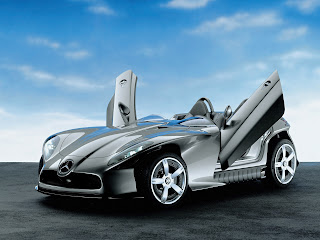


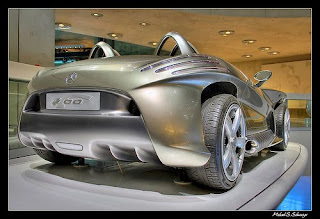







+NEW+BMW+F800R+Chris+Pfeiffer+Edition1.jpg)
+NEW+BMW+F800R+Chris+Pfeiffer+Edition2.jpg)


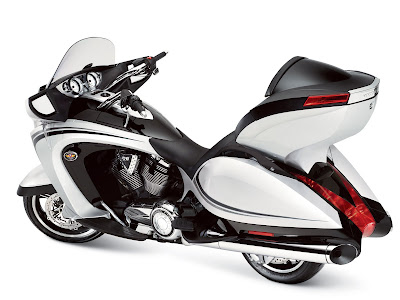












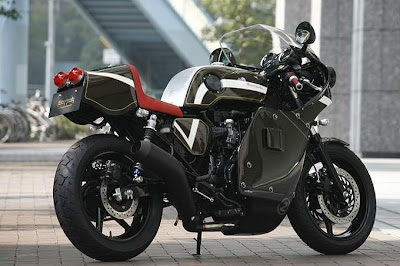
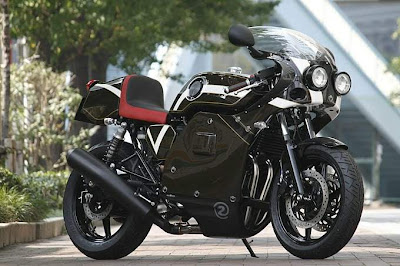

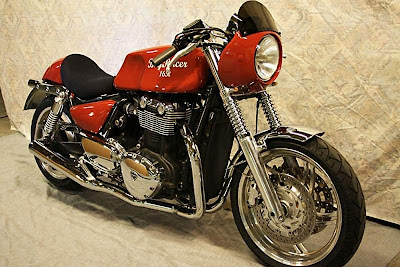







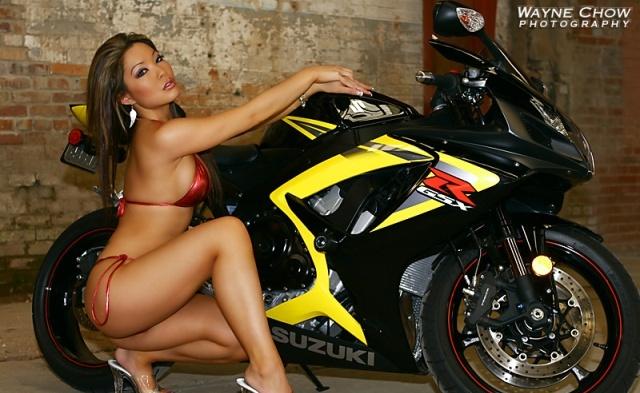

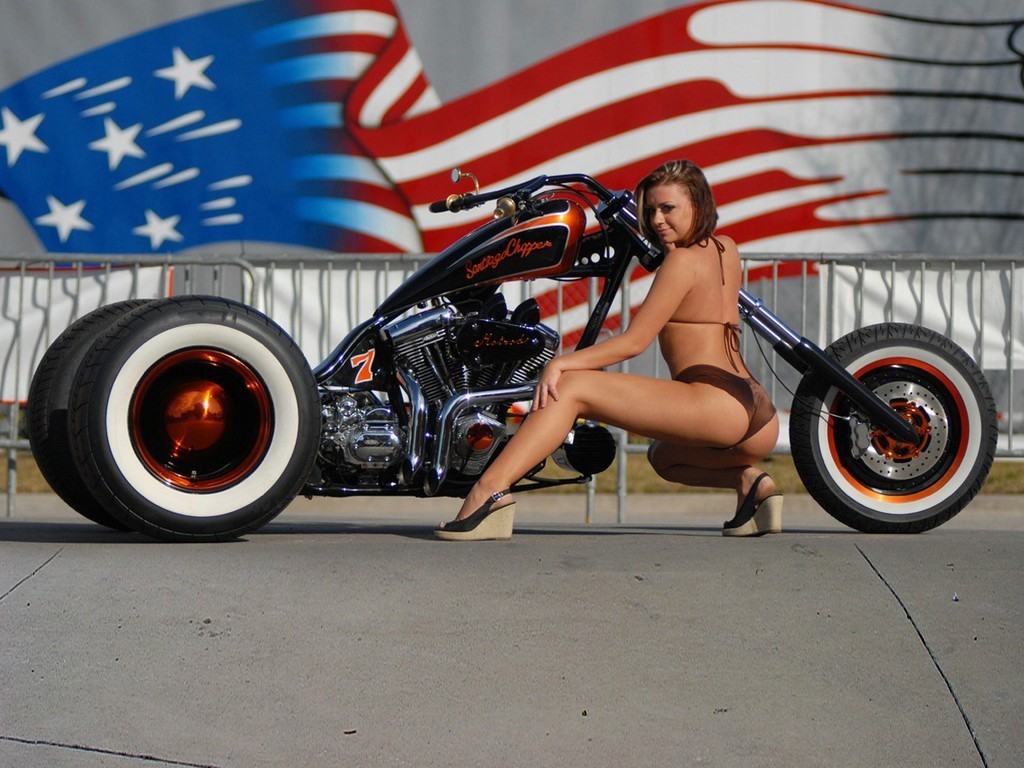

+NEW+BMW+F800R+Chris+Pfeiffer+Edition.jpg)





